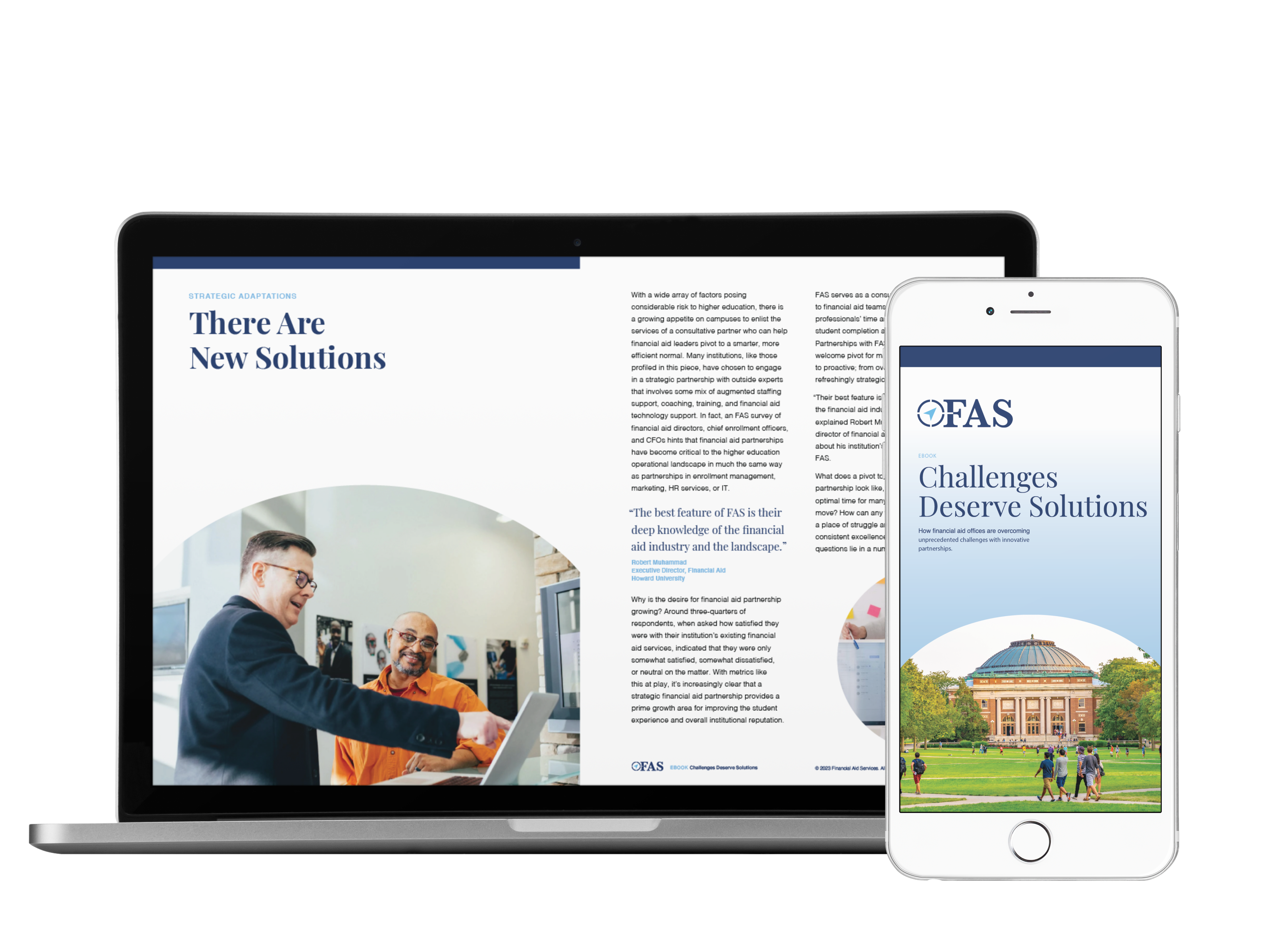Challenges Deserve Solutions: Rethinking the Financial Aid Services Model
By: Robert Heil
Administering financial aid has never been more difficult, and if you’ve been in the industry for as long as we have, it might even seem like it’s become harder in recent years.
You know the challenges: understaffed offices, ever-changing regulations, and high expectations from students and parents. Add to those timeless difficulties worrisome enrollment forecasts, sky-high student and parent expectations, and a raft of other societal factors impacting the higher ed industry. You’ve got arguably the most challenging financial aid environment there has ever been.
You also know what we, as leaders in financial aid solutions, also know: that the complications that arise from financial aid accessibility and timeliness all affect a student’s experience at an institution. If it’s poor, students may very well go elsewhere.
To help guide the way through this trying landscape, we’re developing an in-depth, data-driven e-book that will explore these multifaceted challenges—and the innovative processes and technologies that are solving them.
We’re excited to share the release of a new e-book with you in the coming weeks and to offer a preview of it here.
What FAS Found in Our Research.
To guide our e-book, we surveyed senior leaders to gauge their biggest issues in administering financial aid. Four major challenges and themes emerged from the survey.
- Compliance
- Meeting Student Expectations
- Tech Optimization
- Staffing Pressures
Having been in the industry for 32 years, these issues aren’t necessarily new to us. But what stood out to us was that, despite their best efforts, campus leaders said the severity of these challenges is quickly magnifying over the last two to three years.
That’s troubling. It’s one thing to know a consistent set of challenges exists; it’s quite another to feel like these problems haven’t been—or can’t be—solved, or at least improved.
Meanwhile, college enrollment is dropping, headed for a widely foretold ‘enrollment cliff’ due to a wide array of economic factors that will take a broad set of collective actions to address.
So, we set out to survey the landscape of financial aid in the U.S. And while what we heard were reactions that expressed frustration and concern, we also saw hope that campus leaders are looking for new and better operating models.




